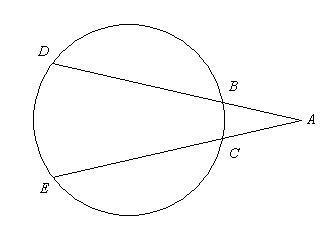
Mathematics, 31.03.2021 17:00 Suhayb981
Consider these three squares with known area.
3 squares. The smallest square is labeled 25, the next square is 144, and the largest square is 169.
Can a right triangle be formed using these squares?
Yes, the sum of the two smaller squares does not equal the largest square.
Correct > Yes, the sum of the two smaller squares equals the largest square.
No, the sum of the two smaller squares does not equal the largest square.
No, the sum of the two smaller squares equals the largest square.

Answers: 2


Another question on Mathematics

Mathematics, 21.06.2019 18:20
17. a researcher measures three variables, x, y, and z for each individual in a sample of n = 20. the pearson correlations for this sample are rxy = 0.6, rxz = 0.4, and ryz = 0.7. a. find the partial correlation between x and y, holding z constant. b. find the partial correlation between x and z, holding y constant. (hint: simply switch the labels for the variables y and z to correspond with the labels in the equation.) gravetter, frederick j. statistics for the behavioral sciences (p. 526). cengage learning. kindle edition.
Answers: 2

Mathematics, 21.06.2019 20:10
Which expression do you get when you eliminate the negative exponents of 4a^2 b^216a^-3 b
Answers: 3

Mathematics, 21.06.2019 22:30
Which statements are true about additional information for proving that the triangles are congruent check all that apply
Answers: 1

Mathematics, 22.06.2019 02:00
Find the distance of the blue line between the two labeled points. round to the nearest hundredth. a) 7.07 b) 7.21 c) 10 d) 5.12
Answers: 3
You know the right answer?
Consider these three squares with known area.
3 squares. The smallest square is labeled 25, the nex...
Questions


Mathematics, 18.10.2019 16:50

Mathematics, 18.10.2019 16:50


Social Studies, 18.10.2019 16:50

History, 18.10.2019 16:50


History, 18.10.2019 16:50

History, 18.10.2019 16:50


English, 18.10.2019 16:50

Mathematics, 18.10.2019 16:50

Health, 18.10.2019 16:50


Mathematics, 18.10.2019 16:50

Mathematics, 18.10.2019 16:50



Mathematics, 18.10.2019 16:50




